Oh no! Your strawberry plants are wilted, are not producing, and the leaves look burned. It’s too hot for your strawberries. The preferred temperature range of strawberry plants is 60-85 degrees.
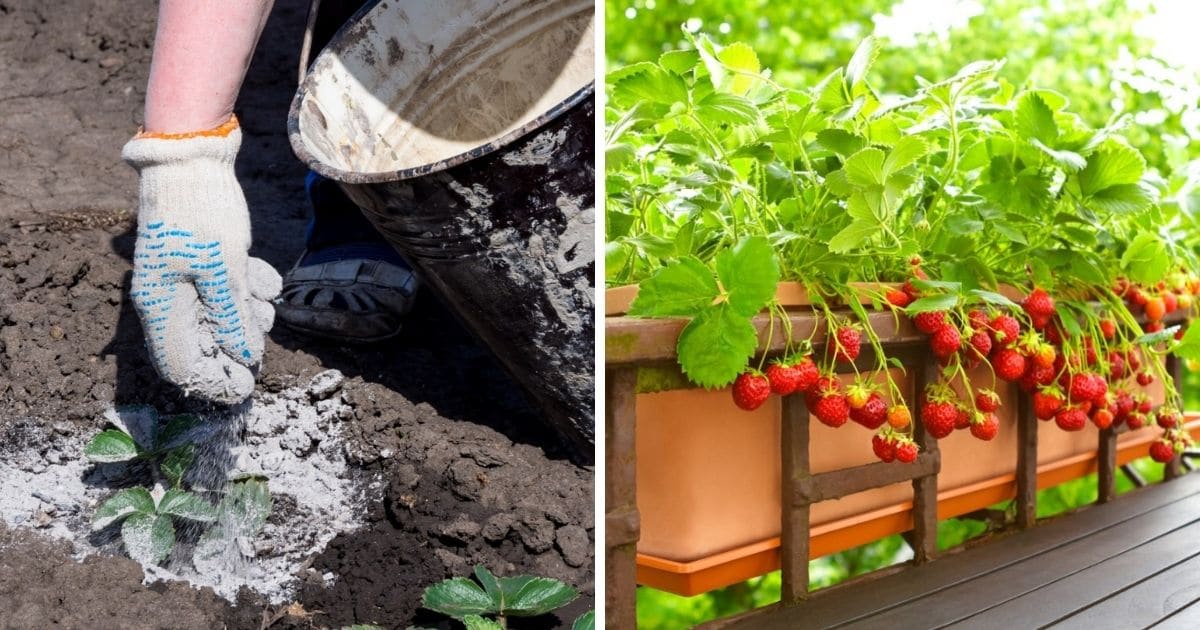
They can tolerate up to 100 degrees on occasion but what can you do to protect your strawberries from prolonged extreme heat?
Shade
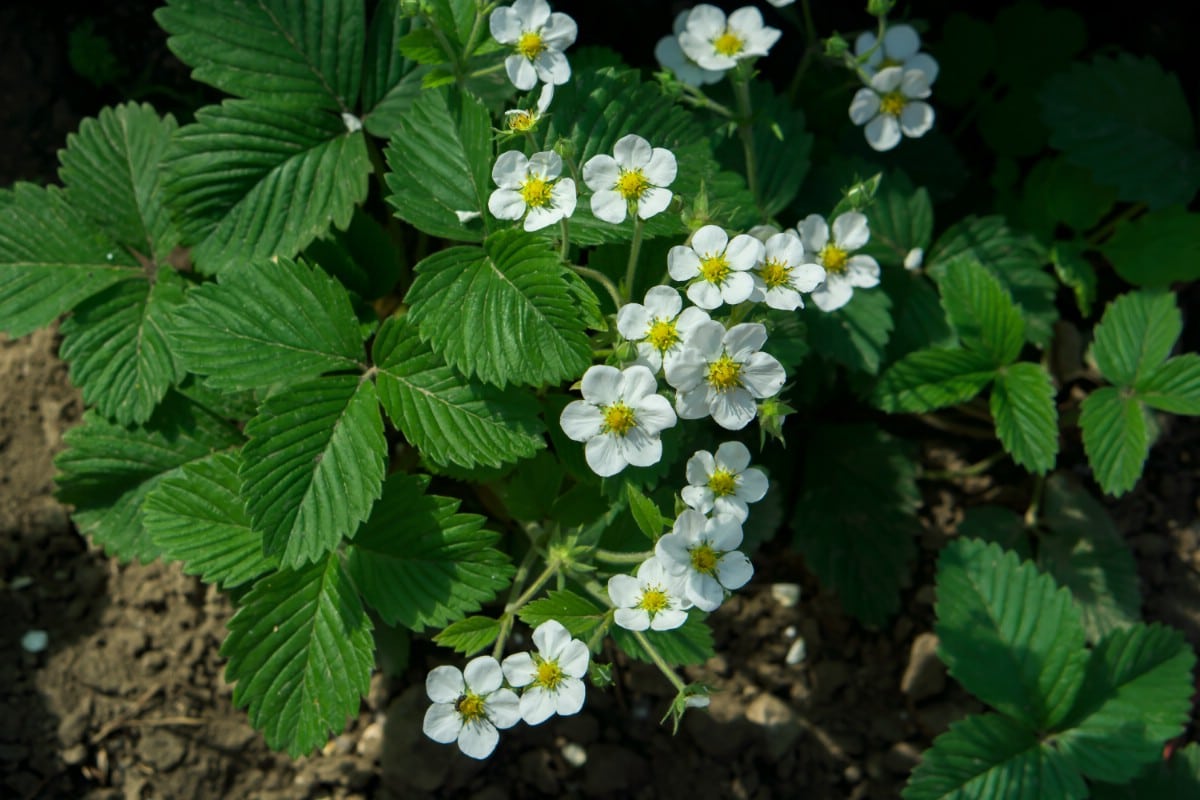
The number one way to beat the heat is shade. Create shade for your strawberries using a 50%-65% shade cloth all day in extreme heat. If you expect climactic high heat, like summers in zones 9 and 10, consider planting your strawberry patch in an area that receives regular afternoon shade such as the south side of a tree.
Cultivar
Choose heat-tolerant varieties. Strawberries are historically a temperate zone crop, but some varieties have been bred and adapted to growing in warmer climates. One such cultivar called Alexandria is happy in shade and tolerates high temperatures so you can take advantage of two types of heat protection.
Container Growing
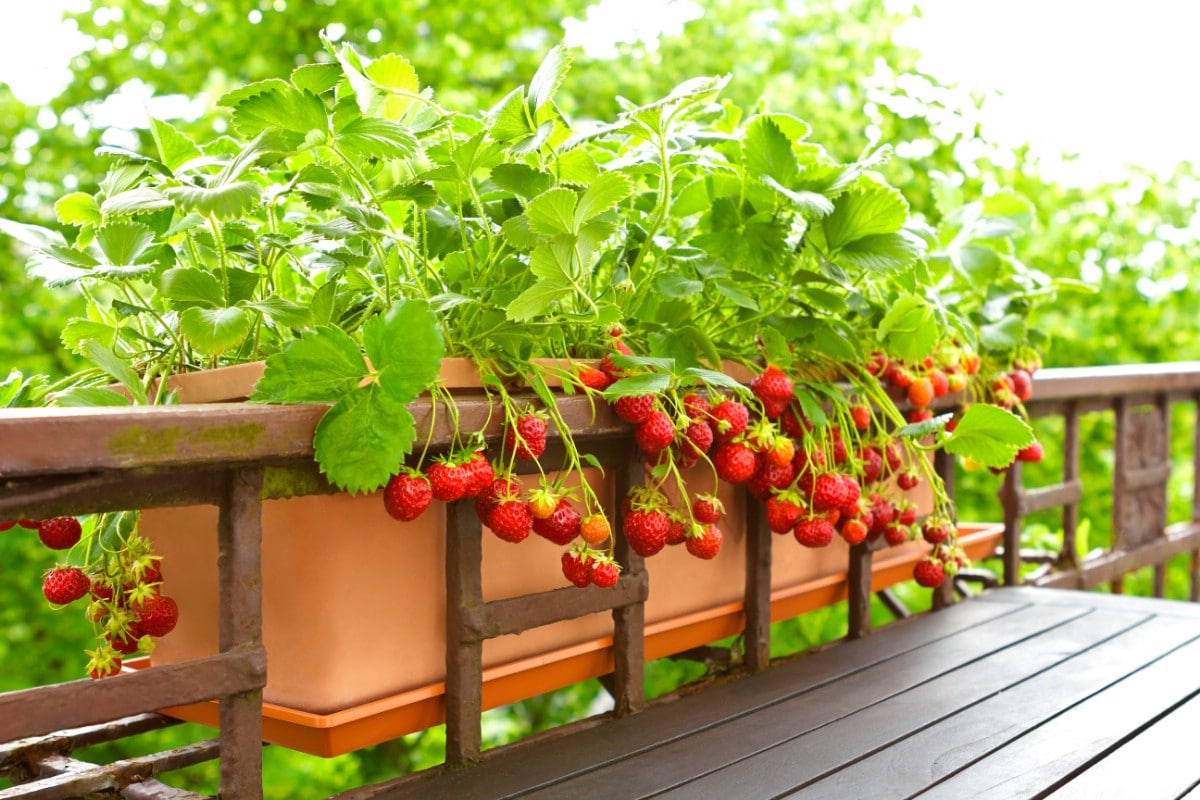
Growing your strawberries in containers offers a lot of flexibility. Place the containers in full sun when the weather is cooler to encourage fruiting and bring them into the shade when temperatures rise. Containers also offer better airflow and allow the soil to cool more quickly.
Mulch
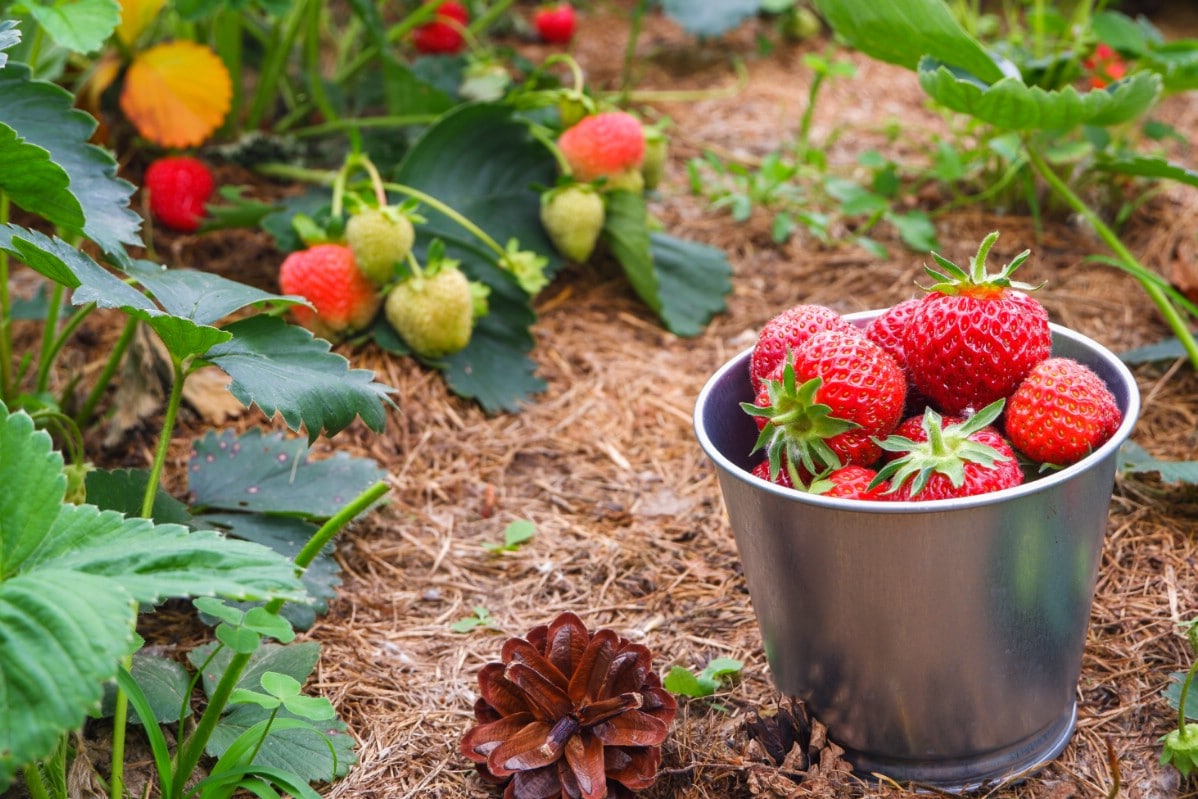
Cover soil loosely with straw or pine needles and water only when the straw is dry to prevent slug infestation. A light, reflective mulch allows air to flow freely, keeps the berries off the mud, and keeps the soil cool and moist.
Timing
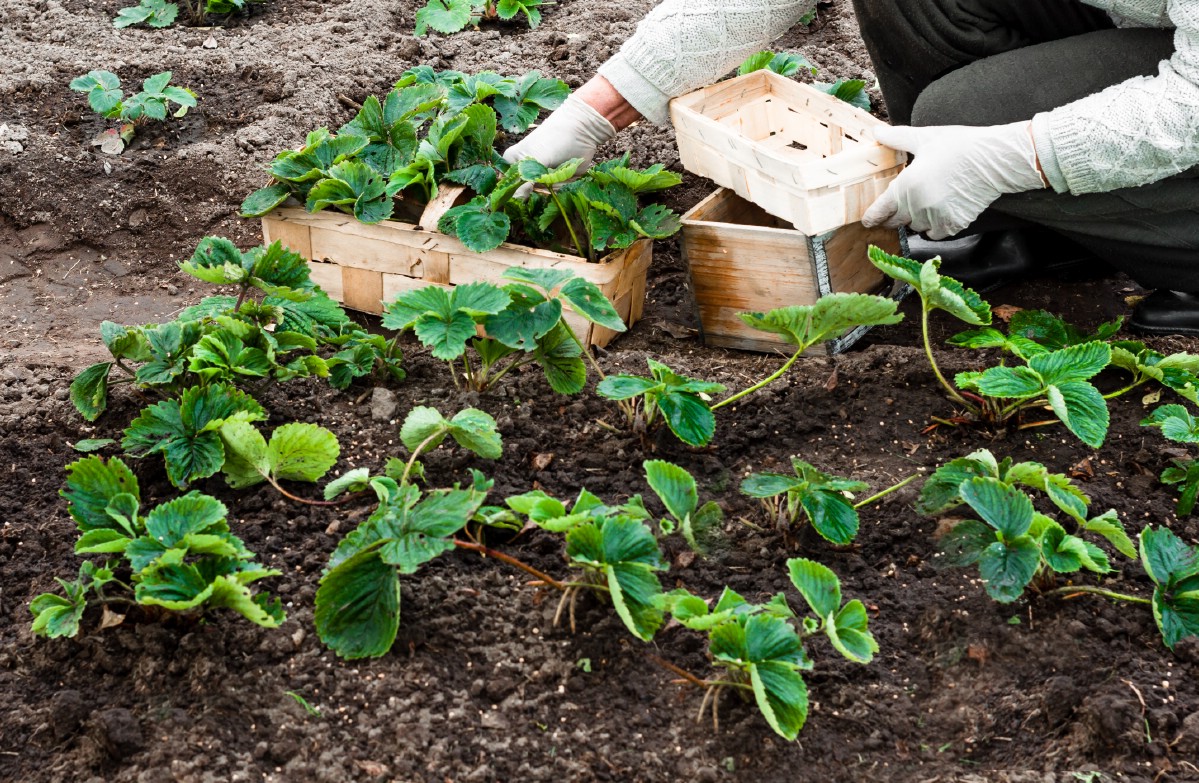
Plant in fall if you live in a predictably hot climate. Harvest will occur during winter when temperatures are more manageable. Strawberries planted in spring with a hot summer ahead will almost certainly fail to produce.
Microclimates
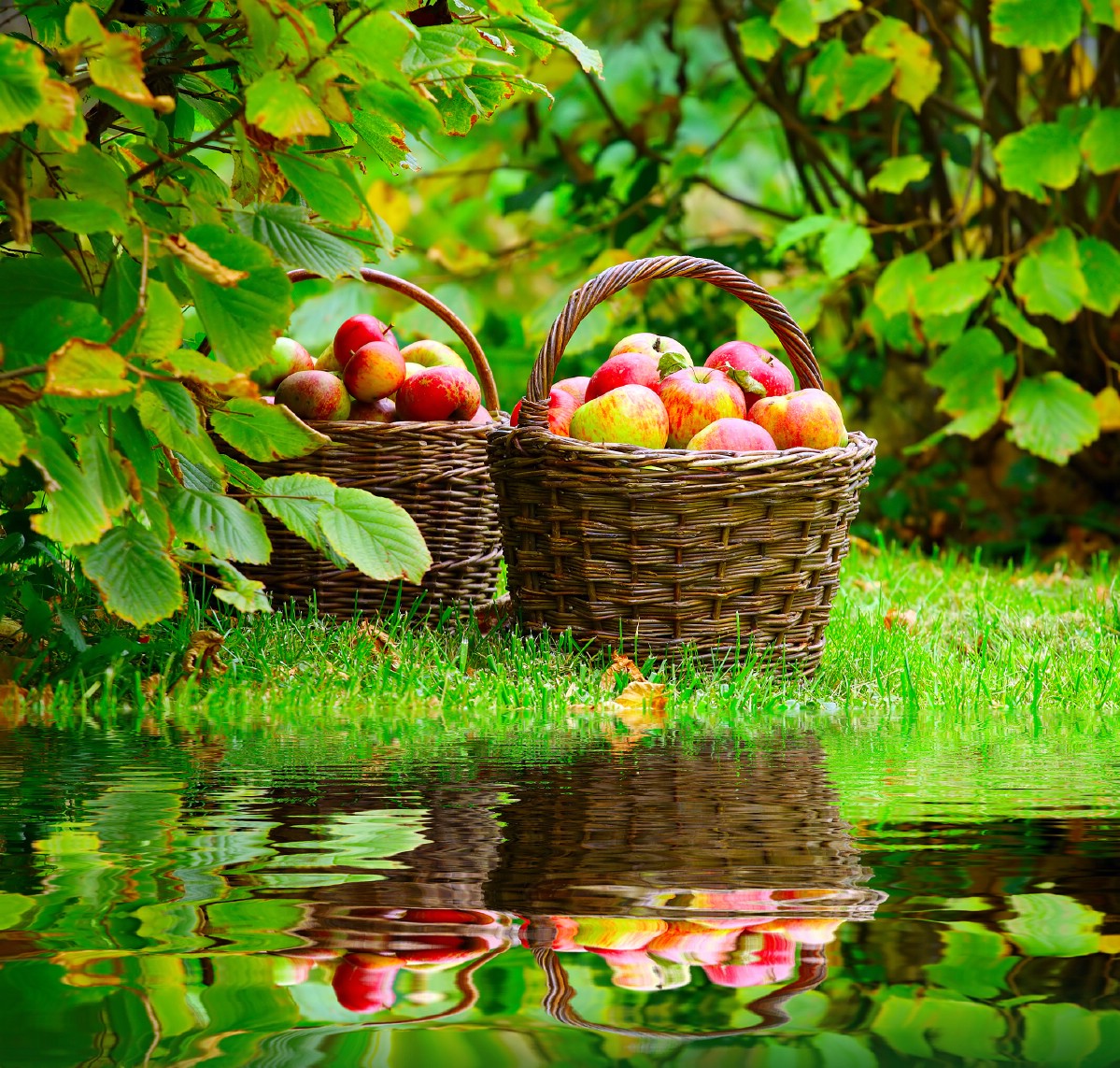
Take advantage of microclimates in your garden. Sites near a pond, near the edge of a woodland, or under the shade of taller garden plants are cooler areas that can protect your strawberries.
Water
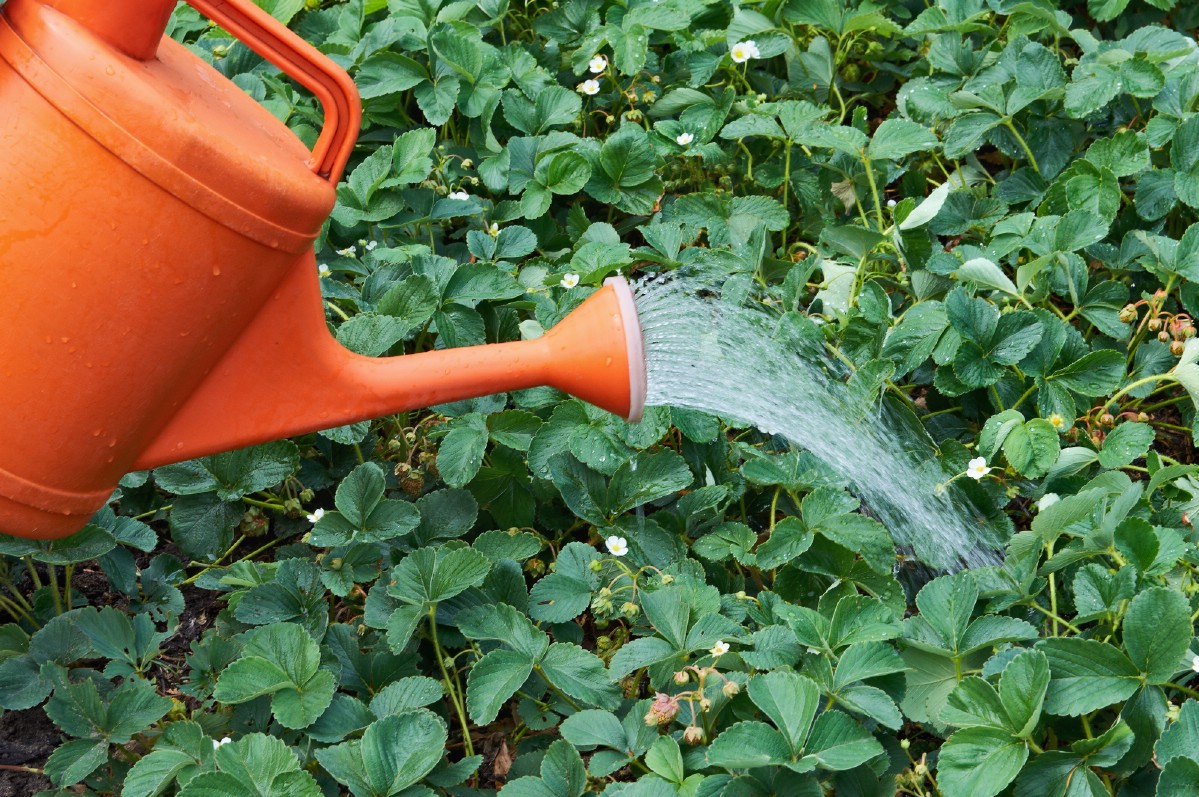
Watering the “wrong way” can harm plants but a few guidelines can help you to water your strawberries safely.
- Water deeply – The heat will speed up evaporation from the top few inches of soil. Water deeply to ensure your strawberries will have access to water when they most need it.
- Water early or late – Do not water your strawberries when the sun is most intense: between 10 AM and 4 PM. Ideally, water your plants early in the day when the soil has cooled overnight and the roots are most receptive to water uptake.
- Don’t overwater – You may be tempted to overwater your strawberry patch when it’s hot out, but resist the urge! Overwatering is just as dangerous as underwatering and opens your plants up to a slew of diseases and pests.
Don’t Fertilize
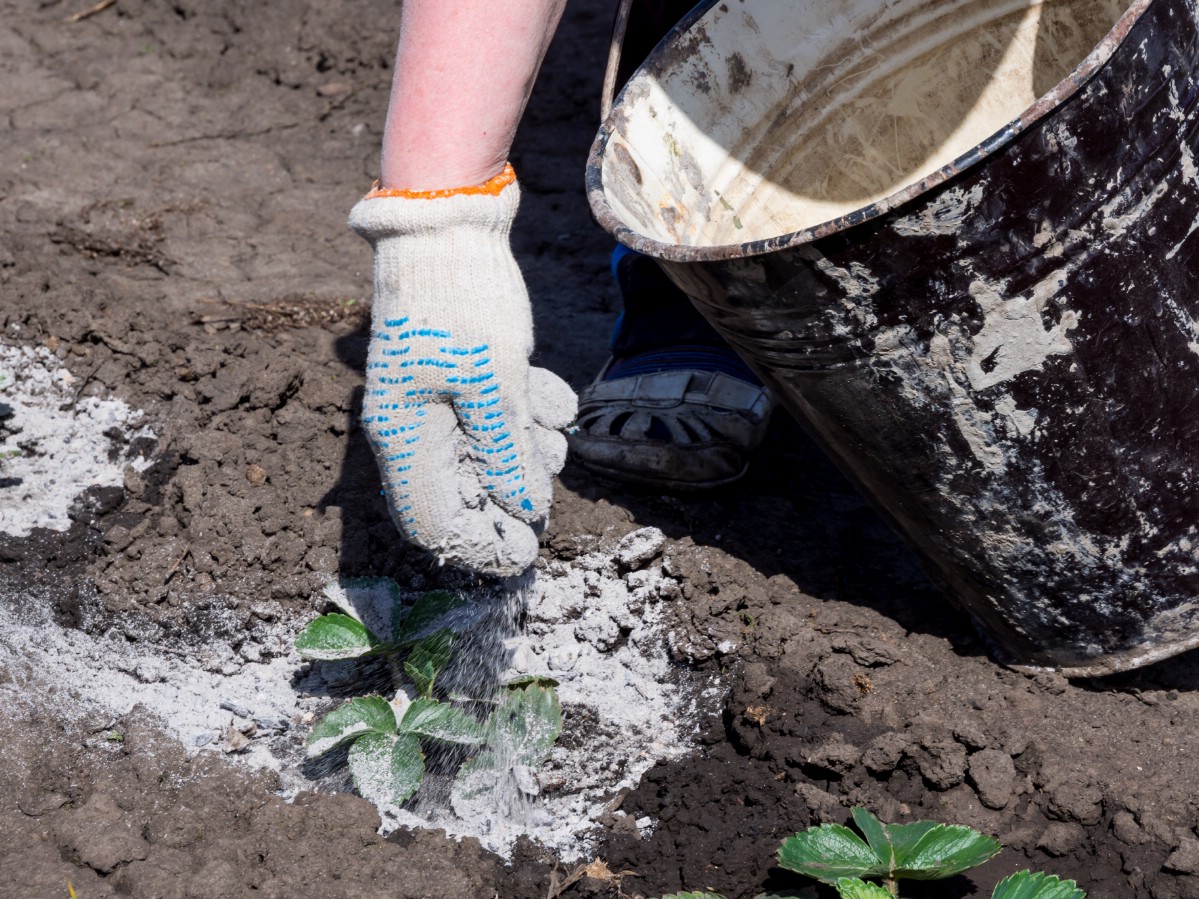
Don’t fertilize your strawberries when temperatures are too high. The plants’ ability to absorb nutrients will decrease in high temperatures so fertilizer salts will collect in the soil. Too many salts in the soil will also diminish their ability to absorb water. Water is especially important for your strawberry plant to survive a heatwave.
You can grow strawberries successfully in high heat if you are careful and give them a little extra consideration. Try these 8 tips to save your strawberry crop this year.








Joan says
For beating the shade you stated, “consider planting your strawberry patch in an area that receives regular afternoon shade such as the south side of a tree.” I live in zone 10b and the south side of our trees is always the sunny side. Our trees cast shade on their north side and as the sun moves west the shade moves sort of northeast. Also, the north side of our house has the most shade of anywhere in the yard. By my observation, the north side is where the shade is happening.
Mary Ward says
Of course you should adjust for your location. When you plant with afternoon heat protection in mind, choose a spot where they will get enough full sun (6 to 8 hours, ideally) in the morning before the heat hits.
Thank you!